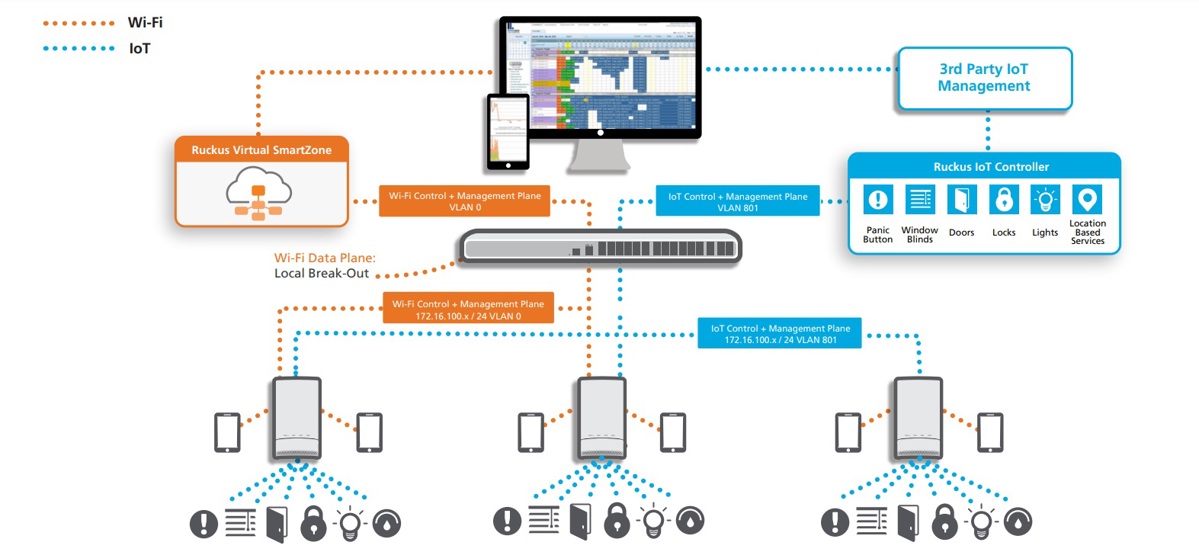Wi-Fi 7 Speed: Analysis & Evaluation
The Wi-Fi Alliance certified the next-generation Wi-Fi standard, Wi-Fi 7, earlier this year. The new standard boasts high throughput, low latency, and greater reliability, which will enable multi-user augmented and virtual reality, immersive 3-D training, electronic gaming, hybrid work, industrial Internet of Things (IoT), advanced automotive, and other applications. The Wi-Fi Alliance clocks Wi-Fi 7 speed at 36 Gbps maximum, although some sources put Wi-Fi 7 speed at 46 Gbps maximum. The table below lists the key Wi-Fi 7 features and their advantages.

Wi-Fi 7 Speed and Other Features |
|
|---|---|
| Feature | Benefit |
| Top Speed | 36-46 Gbps |
| 320 MHz Channels | 2X higher throughput than Wi-Fi 6 (in countries that have opened the 6 GHz band to unlicensed use) |
| Multi-Link Operation | Enables devices to combine different channels across frequency bands, allowing concurrent transmission and reception of data over multiple links; reduced latency, increased efficiency, greater reliability |
| 4K QAM (Quadrature Amplitude Modulation) | 20% higher transmission rates than Wi-Fi 6 |
| 512 Compressed Block Ack | Improves efficiency and reduces transmission overhead |
| Multiple Resource Units to a Single User | Improves spectrum resource scheduling flexibility for enhanced spectral efficiency |
| Triggered Uplink Access | Optimizes Wi-Fi 6-defined triggered uplink access to accommodate latency-sensitive streams and satisfy quality of service requirements |
| Emergency Preparedness Communication Services | Provides National Security and Emergency Preparedness (NSEP) service experience to users while maintaining the priority and quality of service in Wi-Fi access networks |
| Security | Requires WPA3 security for devices, making use of stronger key management and data encryption |
| Use Cases | Multi-user AR/VR/XR, immersive 3-D training, electronic gaming, hybrid work, industrial IoT, and automotive |
Features Affecting Wi-Fi 7 Speed
While the Wi-Fi Alliance estimates the top speed of Wi-Fi 7 at 36 Gbps, there are other aspects of the technology that affect speed measures.
320 MHz Channel Operations
Wi-Fi 7 enables the operation of 320 MHz according to IEEE protocols, which increases the peak modulation coding scheme (MCS) data rate from 2.409 Gbps in Wi-Fi 6 to 5.7648 Gbps in Wi-Fi 7.
Multilink Operation
Multi-link operation in Wi-Fi 7 allows devices to have connectivity on multiple links. So, an access point (AP) multi-link device could support three radios and establish three links with a station (STA) multi-link device, one in 2.4 GHz with a bandwidth of 40 MHz and two spatial streams, one in 5 GHz with a bandwidth of 160 MHz and two spatial streams, and another one in 6 GHz with a bandwidth of 320 MHz and two spatial streams. This would lead to an aggregate maximum data rate of two times (344.1 Mbps + 1441.2 Mbps + 2882.4 Mbps) or 9.335 Gbps.
4K QAM
Wi-Fi 7 introduces 4K QAM, raising the transmission rates by 20% at shorter ranges over Wi-Fi 6’s 1K QAM without any increase in bandwidth or number of antennas. 4K QAM helps support streaming of 4K/8K videos, playing massive online games without lags, or live streaming from a home computer.
Multiple Resource Units to a Single User
Wi-Fi 7 enables multiple resource units to be assigned to a single user, which facilitates combined resource units for increased transmission efficiency. This in turn provides flexibility to fit the data, avoid interference, and enhance spectral efficiency.
RUCKUS Wireless and Wi-Fi 7
RUCKUS Wireless is one of the companies that formed the test bed for Wi-Fi 7 certification and offers one of the first certified Wi-Fi 7 devices.
The RUCKUS R770 enterprise-class indoor AP leverages Wi-Fi 7 to deliver a 12.22 Gbps combined data rate, even in challenging environments. The R770 addresses the increasing Wi-Fi demands in transit hubs, auditoriums, conference centers, and other indoor spaces.
The R770 improves network performance through a combination of RUCKUS wireless innovations and learning algorithms, including:
- Airtime Decongestion.
Boosts average network throughput in heavily congested environments - Transient Client Management.
Reduces interference traffic from unconnected Wi-Fi devices - BeamFlex and Adaptive Antennas.
Extends coverage range and optimizes throughput with dynamic multi-directional antennas and radio patterns. - RUCKUS AI.
Provides a cloud service for network assurance and business intelligence

As a trusted RUCKUS Networks distributor, WAV can connect you with the best Wi-Fi 7 technology, such as the RUCKUS R770 Wi-Fi 7 indoor AP.
Ready to upgrade to Wi-Fi 7 technology? WAV can help! Talk to one of our wireless networking experts to learn more.

